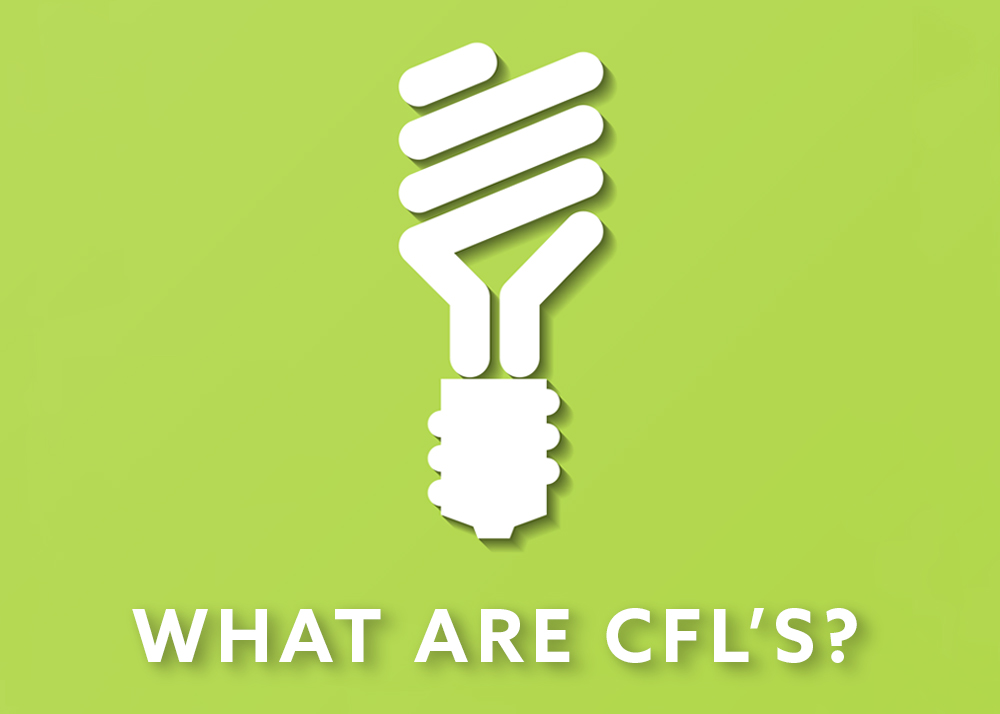What are CFL Bulbs?
What Are CFL Bulbs?
With today’s many different energy-saving lightbulb choices, choosing the right lights has become slightly more confusing than when there was only one kind of lightbulb from which to choose at the local hardware store. All light bulbs — CFLs, LEDs and incandescent bulbs — have unique benefits and challenges. Incandescent bulbs are the traditional choices: they offer a pleasant, soft light. CFL light bulbs and LEDs are prized for their energy-efficient functions.
“What is a CFL light bulb,” you may ask. This Flip the Switch blog article focuses on CFL light bulbs and compares CFL bulbs versus LED light bulbs. This way, you can be informed and decide if CFL light bulbs are the best choice for your home.
The Science Of CFL Lights
Compact Fluorescent Lamps (CFLs) rely on gas reactions inside their tubes to produce light. The folded tube of a CFL light bulb contains argon and mercury vapor; in addition, the inside of the tube is coated with a fluorescent paint. The internal ballast system sends a current through the tube to excite the gases. This, in turn, emits ultraviolet light. The fluorescent coating absorbs the UV rays and emits visible light.
There are two important aspects to consider about the light emitted by CFLs: color temperature and lumens. The color temperature refers to the CFL light’s quality compared to a reference source, such as natural light. This is measured using the color rendering index (CRI), which rates the quality of light compared to daylight. Daylight has a CRI of 100. High-quality CFL light bulbs can produce a white light with CRI values of 80 to 90, providing a close approximation of natural light.
Lumens are the measure of how much visible light is emitted by a light bulb. Light bulbs are rated by how many lumens are produced per watt of electrical power. CFLs are very energy efficient: A single CFL uses only about a quarter of the power of an incandescent bulb to produce the same amount of lumens.
Types of Compact Fluorescent Lightbulbs
There are several types of CFL light bulbs on the market. Some fixtures, especially those in commercial applications, use a “plug-in” base rather than the familiar “screw-in” base that is more often used in residential applications. Fixtures with plug-in bases require either 2-pin or 4-pin CFL bulbs. A GU24 base requires a bulb with two locking pins and a shorter thread than traditional incandescent bulbs. There are also CFL light bulbs with candelabra bases. These are designed to fit into thin screw-in candelabra sockets.
Pros and Cons of CFL Light Bulbs
Most people choose CFL light bulbs because, compared to incandescent bulbs, they are highly energy efficient: they use up to 75% less energy than their incandescent counterparts. In many light fixtures, you can quickly and easily swap out your old incandescent bulbs for CFL light bulbs. Along with using less energy than incandescent bulbs, CFLs have a longer lifespan. CFLs are rated up to 15,000 hours, whereas incandescent bulbs may last up to 1,000 service hours.
CFL wattage is also less than incandescent lighting’s wattage. CFL lights’ wattages range from 8 watts to 55 watts, depending on their lumen output. Incandescent light bulbs, on the other hand, can vary between 40 watts and 150 watts.
CFL Bulb Downsides
There are potential downsides to CFL bulbs. CFL light bulbs cost more initially than incandescent bulbs, although the cost is recovered by the lower energy usage and longer lifespans. Because of their hazardous contents, there are some concerns that CFLs negatively impact the environment. CFLs also require special disposal; however, many companies provide CFL recycling programs. Additionally, the amount of mercury that is released when a bulb breaks is so small that, if it is cleaned up properly, it is not a health concern. CFL light bulbs also take between 30 seconds to three minutes to complete the gas reactions inside the bulb. As a result, CFL lights can take longer to achieve their full brightness.
CFL Bulbs vs. LED Lights
Although CFL light bulbs are more energy efficient than incandescent lights, LED lights offer the most energy savings — up to 85% less than incandescent options and up to 50% less than CFLs. That said, LED lights are often more expensive than CFLs; however, the overall savings throughout their extended longer lifespan will help mitigate their initial higher cost.
When Should you Choose CFLs?
CFL bulbs offer many benefits for homeowners and can be a smart replacement for inefficient incandescent bulbs. Newer CFL models offer beautiful white light, last a long time and only use a fraction of the energy of an incandescent bulb. Find the right CFLs for your home’s light fixtures and enjoy a beautiful quality of light and lower energy bills. Have questions about CFL light bulbs? Contact Destination Lighting. Our ALA-certified customer service team can help with information, advice and pro tips that will help you choose the right lighting for your specific needs.


Leave A Reply